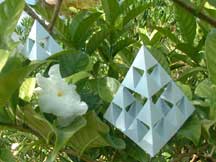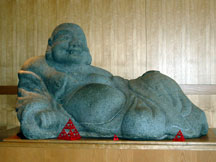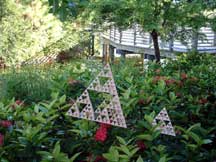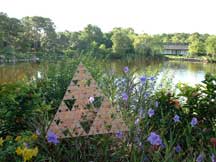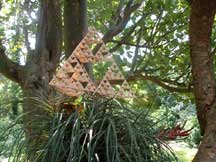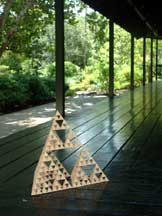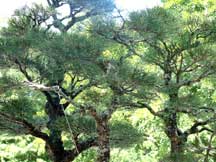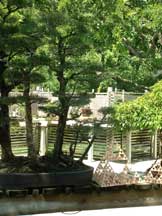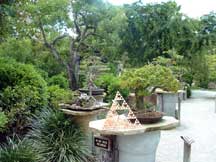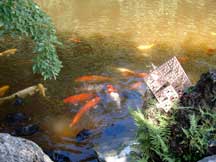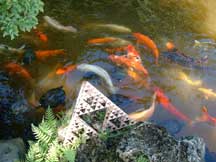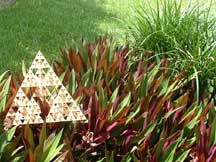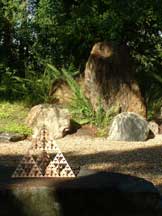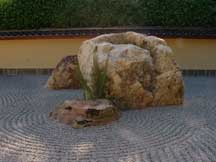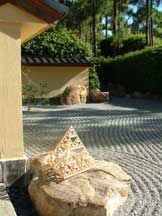|
and Japanese Gardens |
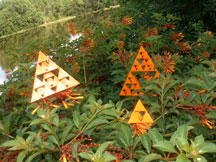
|
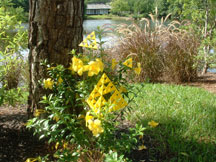
|
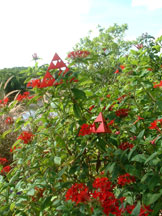
|
|
These were taken from an area in the front section of the Morikami gardens. The orange flowers are blooms of the Fire Bush (Hamelia patens). The yellow flowers are Allamanda (Allamanda cathartica) where to the right in the same picture, and a little further back, is Fountain grass (Pennisetum setaceum). In the picture on the far right, the red flowers are Pentas (Pentas lanceolata). In each picture is a family of Sierpinski Tetrahedra. |
||
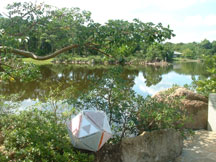
|
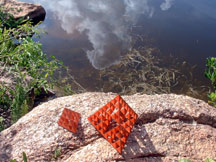
|
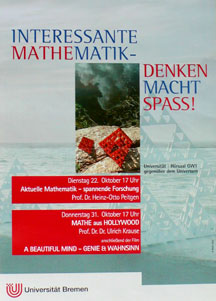
|
|
The left and middle pictures were taken overlooking Morikami Lake,
shown from a different angle on the
Morikami Museum and Japanese Gardens
home page. The left
image (from Summer 2002) shows a home for 20 of my Sierpinski tetrahedron
families, made of a packing of 20 tetrahedron compartments that have
surface flaps which open and close. In the middle picture, I was
looking almost straight down into the lake.
The poster on the right has a slice of the middle picture in it,
and was made (not by me) for a lecture series presented to high school students
in Bremen, Germany. The background image in the poster is from a greatly
lightened picture taken in Summer 2002 in the
1000 block of N. Ocean Blvd., Boca Raton, with the Sierpinski tetrahedra
sitting on a concrete ledge overlooking the ocean. |
||
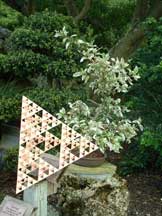
|
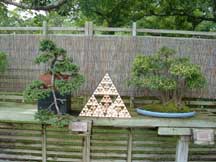
|
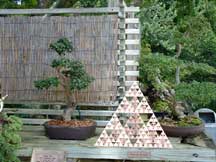
|
|
I had to be extremely careful not to let the Sierpinski tetrahedra touch the Bonzai, as they are very delicate, well-tended, and well-protected by Morikami employees. |
||
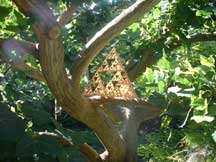
|
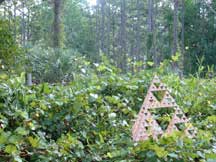
|
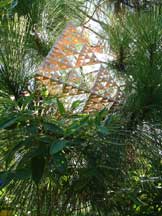
|
|
Over time, as I would set the tetrahedra in nature, I began to notice that much of nature is quietly iridescent. Life glows, much of it. The paint for the peach-toned set of structures is loaded with iridescence. They were the only set of structures with me in Summer 2003. Most of the earlier-made, more colorful sets of structures (like the yellow, orange, and red sets seen earlier on this page) are painted with pure pigments but they aren't translucent and there is no iridescence added to the paint. The first image on the page, however, shows a set of light blue structures that is from another iridescent set, made especially for the ocean, also shown in the poster several rows up. |
||
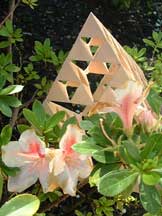
|
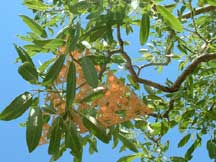
|
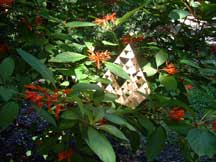
|
|
|
||
| Frequently Asked Questions |
Permission must be sought for all but personal use for study or enjoyment.
